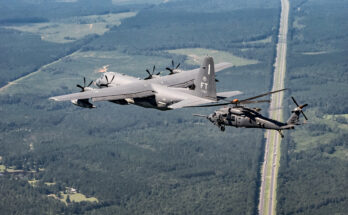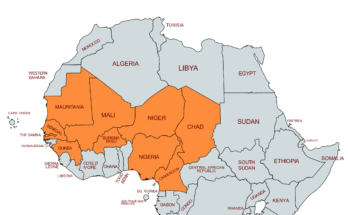“I believe that the European Union more accurately reflects what the world will look like at the end of history than the contemporary United States. The EU’s attempt to transcend sovereignty and traditional power politics by establishing a transnational rule of law is much more in line with a ‘post-historical’ world than the Americans’ continuing belief in God, national sovereignty, and their military.” – Francis Fukuyama, The End of History and the Last Man
With the signing of the Belavezha Accords by the presidents of Belarus, Russia, and Ukraine, the Soviet Union formally dissolved on December 8, 1991. Since that time, each of these three countries has moved in its own direction, though forever bound by a shared heritage.
Fast forward to the early hours of February 24, 2022, and these three countries are now entangled in a different scenario, this one involving a Russian military invasion of its Ukrainian neighbor, abetted by Moscow’s partner in Belarus, with the latter allowing Russian forces to use its soil as a launching point for one of several thrusts into Ukraine.
Russian President Vladimir Putin’s goal of “de-militarizing and de-Nazifying” Ukraine is now underway, and, whether it wishes it all away, the rest of Europe now confronts the type of state-on-state warfare and hard-power scenarios on its frontier that it hoped to avoid.
The European Union (EU) has imposed a first tranche of sanctions on Putin’s Kremlin circle, with more to follow, including an export embargo on critical technologies.
But in reality, sanctions – as enticing a tool in a politician’s handbook as they may be – are too little, too late to change the behavior of the Russian leader.
The die has been cast.
War is now on Europe’s easternmost borders in a country geographically situated astride four dual EU-NATO member nations. This does not even include the three dual EU-NATO member nations wedged between Belarus and Russia.
The situation is hardly surprising for those who have closely observed Russia’s actions in its former Soviet “near abroad” since at least 2007. What began with cyberattacks on Estonian government servers eventually became a military incursion into Russia’s southern neighbor Georgia, before unfolding in the Crimean takeover and absorption into Russia proper in 2014, which was then followed by military and other support for ethnic Russian separatists in the eastern Ukrainian regions of Donetsk and Luhansk (referred to collectively as the Donbass).
Yet with each step has come denial – denial that Russia was a direct threat to Europe, denial that Putin would take further action beyond the bite of the apple just undertaken, denial that a shooting war would actually arrive on Europe’s doorstep.
Military planners often cited Russia as a looming threat in various national defense white papers and national security strategies, but government leaders preferred to believe that Putin’s calculations and sense of risk and rationality mirrored their own.
Perhaps surprisingly, the strongest voice emerging from the dual EU-NATO members’ fold has been from tiny Estonia, where its Prime Minister, Kaja Kallas, has relentlessly and unhesitatingly called out Putin’s machinations well before the first rockets were launched.
Here is my full statement on Russia’s full-scale attack against Ukraine ⬇️
Russia must stop immediately. The people of Ukraine – you have our unwavering support. #StandWithUkraine 🇺🇦 https://t.co/2YvnlqH5Ni pic.twitter.com/GD9glxow69
— Kaja Kallas (@kajakallas) February 24, 2022
Meanwhile, despite the last-minute Hail Mary efforts of French President Emmanuel Macron to play peacemaker with Putin and provide an ear to the Russian leader’s strategic concerns, the military invasion still went forward.
And so here we are, and with the arrival of this conflict come questions related to the second and third order effects of Moscow’s actions.
Just a few of these are:
Will the war in Ukraine spill across borders into Poland or Romania, or even non-aligned Moldova?
Does Russia’s latest action ultimately prompt Finland and Sweden to reconsider past reluctance to join NATO?
Is Putin content to limit Russia’s actions against former Soviet satellites to Ukraine, or are the Baltics, Georgia, Moldova, or even EU member Finland potential targets of direct or indirect actions?
How much support for Ukraine beyond supplying small-scale defensive equipment and munitions is to be expected from NATO members for a non-NATO country? Is any further military aid going to flow into Ukraine?
What happens with French President Emmanuel Macron’s aspiration of a sovereign European defense capability (outside NATO, of course) now that some countries within the EU have been awakened from their decades-long security slumber?
We wait and watch while Ukrainians now confront much harder questions. For them, the end of history ended in 2014, but for the rest of Europe, it ended today.
Dan Darling is Forecast International’s director of military and defense markets. In this role, Dan oversees a team of analysts tasked with covering everything from budgeting to weapons systems to defense electronics and military aerospace. Additionally, for over 17 years Dan has, at various times, authored the International Military Markets reports for Europe, Eurasia, the Middle East and the Asia-Pacific region.
Dan's work has been cited in Defense News, Real Clear Defense, Asian Military Review, Al Jazeera, and Financial Express, among others, and he has also contributed commentary to The Diplomat, The National Interest and World Politics Review. He has been quoted in Arabian Business, the Financial Times, Flight International, The New York Times, Bloomberg and National Defense Magazine.
In addition, Dan has made guest appearances on the online radio show Midrats and on The Media Line, as well as The Red Line Podcast, plus media appearances on France 24 and World Is One News (WION).




